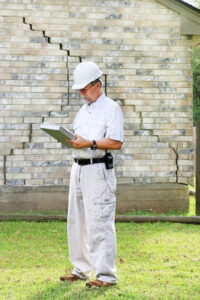Unearth Solid Foundations with Concrete Underpinning
Hey there! So, you know how sometimes your house just feels… off? Like, you’re walking to the kitchen and suddenly feel like you’re on a weird slant?
Or maybe you’ve spotted some funky cracks creeping up your walls? Yeah, that’s not just your house trying to freak you out – it might be crying for help.
Enter concrete underpinning. I know, I know, it sounds like some fancy construction term that’ll make your eyes glaze over. But stick with me here, ’cause this could be the superhero your house needs!
So, what’s the deal with concrete underpinning?
So what’s the deal? It’s like giving your house a super strong pair of shoes. Do you know how good shoes support your feet? Well, underpinning supports your whole dang house. Cool, right?
Why do foundations get weak in the first place?
Now, you might be wondering, “Why’s my house throwing a tantrum in the first place?” Well, there are a bunch of reasons. Maybe the ground underneath got bored and decided to shift around. Or some tree roots thought your foundation looked like a comfy place to hang out. Sometimes it’s just shoddy building work (ugh, don’t get me started).
How do you know if your house is in trouble?
Keep your eyes peeled for these telltale signs:
- The walls look like they’ve got some interesting tattoos (aka cracks)
- Doors and windows that seem to have a mind of their own
- Floors that make you feel like you’re always walking uphill
- Gaps around windows and doors that weren’t there before
If you’re nodding along to any of these, it might be time to call in the pros.
What’s so great about concrete underpinning anyway?
For starters, it’s like giving your home a suit of armor. Once it’s done, you can sleep easy knowing your castle is safe and sound. Plus, if you ever decide to sell, a rock-solid foundation is a major selling point. Cha-ching!
So, how does this underpinning magic happen?
It’s not as mysterious as you might think. Here’s the lowdown:
- First, some smart cookie (a structural engineer) checks your foundation situation.
- Then, it’s time to dig! They’ll scoop out small sections under your foundation.
- Next comes the concrete party – they’ll pour that good stuff into the holes.
- Now, we wait. The concrete needs some time to get its act together and harden up.
- Finally, there’s one last check to make sure everything’s just right.
Sounds simple enough, right? But trust me, this is not a DIY job. Leave it to the pros – they’ve got the know-how and the cool toys to get it done right.
Concrete Underpinning Options
There are different types of concrete underpinning methods. Each has its advantages and is suitable for specific situations.
- Mass Concrete Underpinning: This traditional method involves excavating sections and filling them with concrete. It’s simple and effective for small to medium-sized projects.
- Beam and Base Underpinning: This method uses reinforced concrete beams to support the existing foundation. It’s ideal for structures with heavier loads.
- Mini-Piled Underpinning: Mini-piles are driven into the ground to provide additional support. This method is suitable for properties with limited access or where soil conditions are poor.
Cost of Concrete Underpinning
Now, I know what you’re thinking – “This sounds great and all, but what’s it gonna cost me?” Well, I won’t sugarcoat it – underpinning can be a bit of an investment. But think of it this way: it’s like buying insurance for your house, except this insurance holds your house up!
Choosing the Right Contractor
Selecting the right contractor is crucial for a successful underpinning project. Look for a company with experience and a good reputation.
Ask for references and check online reviews. Ensure they have the necessary licenses and insurance. A reputable contractor will provide a detailed quote and timeline for the project.
Maintenance After Underpinning
Once your foundation is underpinned, regular maintenance is essential. Keep an eye on any new cracks or changes in the structure. Ensure proper drainage around your home to prevent water from affecting the foundation. Regular inspections by a professional can help identify and address any issues early.
DIY vs. Professional
While some home improvement projects can be done DIY, underpinning is not one of them. It requires specialized knowledge and equipment. Attempting to underpin your foundation without professional help can lead to further damage and increased costs. Always hire a qualified contractor for underpinning projects.
Concrete Underpinning Right for You?
If you’re experiencing foundation issues, concrete underpinning is a viable solution. It provides long-term stability and peace of mind. While it can be an investment, the benefits far outweigh the costs. Consult with a structural engineer to determine the best course of action for your home.
The bottom line?
So if your house is acting weird, don’t just shrug it off. Maybe give underpinning a thought. Your house will thank you, your wallet will thank you (eventually), and hey, you might even sleep better knowing your home isn’t doing the cha-cha while you’re in bed.
Just remember – this isn’t a DIY job unless you know what you’re doing. (And if you do, can you come look at my place next?) For the rest of us, it’s best to call in the pros. They’ve got the know-how and the cool tools to get it done right.
So there you have it! Concrete underpinning in a nutshell. Not so scary after all, right? Now go give your house a pat and tell it everything’s gonna be okay. You’ve got this!

